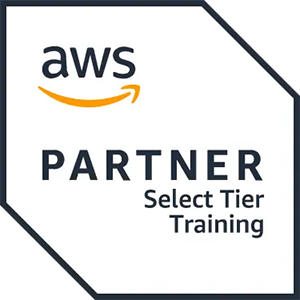Ota yhteyttä
Voit olla meihin yhteydessä ja tiedustella koulutuksistamme täydentämällä yhteystietosi ja koulutuksen nimen oheen.
 Kesto
Kesto 4 päivää
 Toimitus
Toimitus (Online ja paikan päällä)
 Hinta
HintaHinta pyydettäessä
SAN infrastructure and data access
- relate the storage networking infrastructure to host data access using file Input/Output (I/O) and block I/O protocols
- identify control points, such as zoning and Logical Unit Number (LUN) masking, where resource access control for data access integrity can be implemented in a SAN environment
- state the purpose of FC services provided by FC switches such as login server, name server, zoning, and registered state change notifications
- identify the functions of the FC host bus adapter as it relates to host I/O access and to the SAN fabric
- state the purpose of the login process and differentiate among fabric login, port login, and process login
- correlate HBA discovered and reported devices from the fabric with host display interfaces
FC switches and directors – Brocade (b-type)
- plan for the implementation of the IBM TotalStorage SAN switches and directors (b-type and m-type), and the Cisco directors and switch by reviewing default configuration parameters and tailoring options
- list the steps necessary to set up and use the Brocade Web Tools Graphical User Interface (GUI) , the McDATA Enterprise Fabric Connectivity (EFC) Manager, or the Cisco Fabric Manager user interfaces
- describe switch port interfaces and port initialization
- interpret topology, routing, and trunking data displayed by switch management interfaces for a given fabric
- plan and implement switch zoning to restrict any-to-any data access and ensure resource access integrity
FC switches and directors – McDATA (m-type)
- plan for the implementation of the IBM TotalStorage SAN switches and directors (b-type, m-type), and the Cisco directors and switch by reviewing default configuration parameters and tailoring options
- list the steps necessary to set up and use the Brocade Web Tools GUI, the McDATA EFC Manager, or the Cisco Fabric Manager user interfaces
- describe switch port interfaces and port initialization
- interpret topology, routing, and trunking data displayed by switch management interfaces for a given fabric
- plan and implement switch zoning to restrict any-to-any data access and ensure resource access integrity
FC switches and directors – Cisco MDS
- plan for the implementation of the IBM TotalStorage SAN switches and directors (b-type, m-type), and the Cisco directors and switch by reviewing default configuration parameters and tailoring options
- list the steps necessary to set up and use the Brocade Web Tools GUI, the McDATA EFC Manager, or the Cisco Fabric Manager user interfaces
- describe switch port interfaces and port initialization
- interpret topology, routing, and trunking data displayed by switch management interfaces
- plan and implement switch zoning to restrict any-to-any data access and ensure resource access integrity
Course summary and introduction to design
- identify SAN exploitation goals and technical issues to be considered when designing a SAN
- explore options available to configure multiple switches for supporting server to storage access requirements
- list one series of steps to follow when designing a SAN infrastructure
- assess server requirements versus storage subsystem capabilities
- build a fabric based on server and storage bandwidth estimates
This is a intermediate course for individuals who are assessing or planning to deploy a SAN.
You should complete:
- Introduction to Storage Networking (SN700)
- or have equivalent knowledge.
SAN infrastructure and data access
- relate the storage networking infrastructure to host data access using file Input/Output (I/O) and block I/O protocols
- identify control points, such as zoning and Logical Unit Number (LUN) masking, where resource access control for data access integrity can be implemented in a SAN environment
- state the purpose of FC services provided by FC switches such as login server, name server, zoning, and registered state change notifications
- identify the functions of the FC host bus adapter as it relates to host I/O access and to the SAN fabric
- state the purpose of the login process and differentiate among fabric login, port login, and process login
- correlate HBA discovered and reported devices from the fabric with host display interfaces
FC switches and directors – Brocade (b-type)
- plan for the implementation of the IBM TotalStorage SAN switches and directors (b-type and m-type), and the Cisco directors and switch by reviewing default configuration parameters and tailoring options
- list the steps necessary to set up and use the Brocade Web Tools Graphical User Interface (GUI) , the McDATA Enterprise Fabric Connectivity (EFC) Manager, or the Cisco Fabric Manager user interfaces
- describe switch port interfaces and port initialization
- interpret topology, routing, and trunking data displayed by switch management interfaces for a given fabric
- plan and implement switch zoning to restrict any-to-any data access and ensure resource access integrity
FC switches and directors – McDATA (m-type)
- plan for the implementation of the IBM TotalStorage SAN switches and directors (b-type, m-type), and the Cisco directors and switch by reviewing default configuration parameters and tailoring options
- list the steps necessary to set up and use the Brocade Web Tools GUI, the McDATA EFC Manager, or the Cisco Fabric Manager user interfaces
- describe switch port interfaces and port initialization
- interpret topology, routing, and trunking data displayed by switch management interfaces for a given fabric
- plan and implement switch zoning to restrict any-to-any data access and ensure resource access integrity
FC switches and directors – Cisco MDS
- plan for the implementation of the IBM TotalStorage SAN switches and directors (b-type, m-type), and the Cisco directors and switch by reviewing default configuration parameters and tailoring options
- list the steps necessary to set up and use the Brocade Web Tools GUI, the McDATA EFC Manager, or the Cisco Fabric Manager user interfaces
- describe switch port interfaces and port initialization
- interpret topology, routing, and trunking data displayed by switch management interfaces
- plan and implement switch zoning to restrict any-to-any data access and ensure resource access integrity
Course summary and introduction to design
- identify SAN exploitation goals and technical issues to be considered when designing a SAN
- explore options available to configure multiple switches for supporting server to storage access requirements
- list one series of steps to follow when designing a SAN infrastructure
- assess server requirements versus storage subsystem capabilities
- build a fabric based on server and storage bandwidth estimates
This is a intermediate course for individuals who are assessing or planning to deploy a SAN.
You should complete:
- Introduction to Storage Networking (SN700)
- or have equivalent knowledge.
- ` Päivämäärä pyynnöstä

 United Kingdom
United Kingdom Germany
Germany Denmark
Denmark Sweden
Sweden Italy
Italy Netherlands
Netherlands Norway
Norway 















